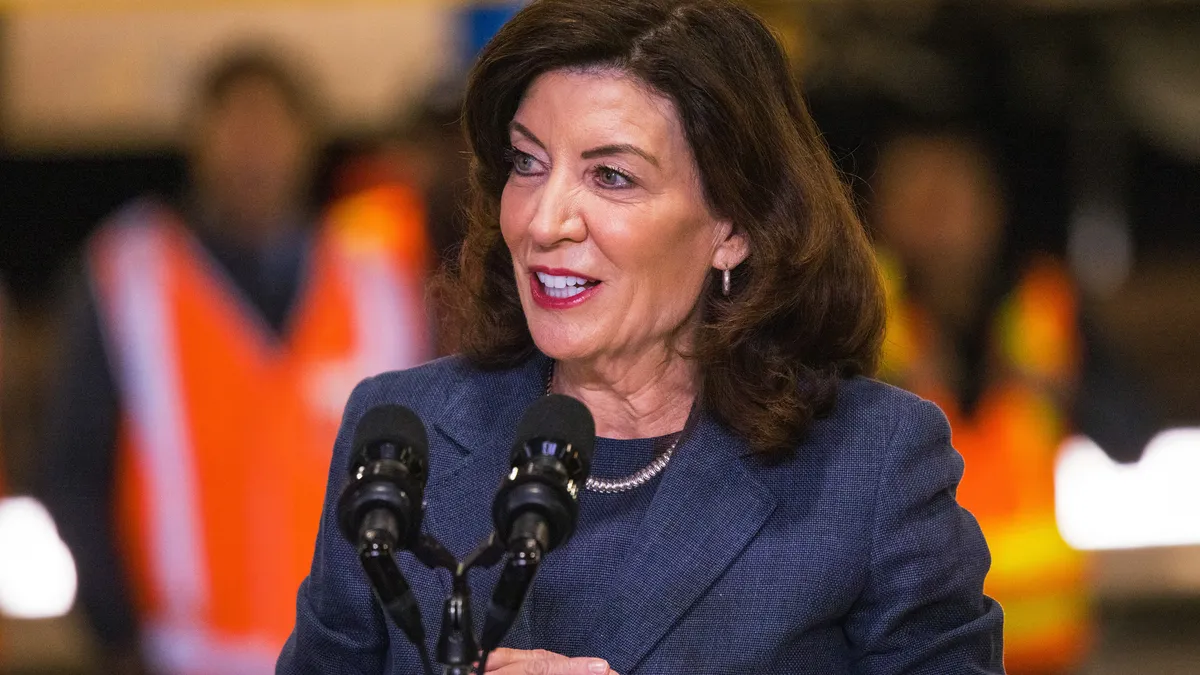Dive Brief:
- The State University of New York system will send letters to about 125,000 graduating high school students in the state to inform them that they’ve been automatically accepted at their local community colleges for this fall, Gov. Kathy Hochul announced Thursday.
- SUNY Chancellor John King Jr. cast the initiative as a way to “make college an easy decision” by telling students about their options. The letters, which will be sent in the coming days, come as SUNY grapples with decade-long enrollment declines.
- Last month, the state’s other public college network, the City University of New York system, said it planned to send personalized letters to public high school seniors who are on track to graduate between January and August 2024. Those will direct students to CUNY’s online application and financial aid information.
Dive Insight:
The initiative is part of Hochul’s plan to ease the path to college for high school students. It is also paired with enrollment coaching and assistance with applying for financial aid, according to the announcement.
"Access to quality higher education is an engine for social mobility and we are taking comprehensive steps to ensure that college is affordable and accessible for students from all backgrounds," Hochul, a Democrat, said in the announcement.
The SUNY mailing campaign will go to New York State students outside of New York City. It is expected to cost around $40,000, according to a system spokesperson.
New York isn’t the first state to take this tack.
The SUNY spokesperson pointed to a direct admissions program in Idaho, which raised first-time undergraduate enrollment by a little over 8%, according to recent research. The program sends letters to high school students telling them they qualify to attend state colleges.
And other research has yielded promising results from mailing campaigns.
A study first published in 2018 found that high-achieving, low-income students were more likely to apply to the University of Michigan if they received a personalized letter promising financial aid.
The mailing campaign targeted around 1,900 prospective students in Michigan. During their senior year, the students received mailings promising them four years of free tuition and fees at the University of Michigan, for which they were already eligible. The researchers determined the students qualified for these aid packages by looking at scholarship amounts given to one with similar backgrounds.
Around two-thirds of students who received the mailings applied to the University of Michigan, compared to just 26% of studied students who didn’t receive them. Students who received the mailings were also more likely to enroll than those who didn’t, 27% versus 12%.
CUNY’s planning group, in addition to considering the University of Michigan study and others like it, conducted an analysis finding that at least 14 states offer some form of guaranteed admission and at least six send welcome letters inviting eligible students to apply.
The CUNY letters will let students know that most will qualify to attend tuition-free, according to a system spokesperson. Officials hope the initiative will spur college hopefuls to apply earlier in the fall and encourage others to think of CUNY as an option.
The announcement said that “multiple points of contact” would assist students with applying for financial aid.
In New York, qualifying students whose families earn $125,000 or less can have their tuition covered through the Excelsior Scholarship after other types of aid are applied. However, the eligibility criteria — including a post-graduation residency requirement — limit its reach.
SUNY is struggling with enrollment. The system’s total enrollment fell to around 363,600 students in fall 2022, a drop of 1.8% from the year before. Its community colleges saw particularly steep declines during the pandemic’s early days, though the losses somewhat stabilized in fall 2022, with a 0.7% decrease to about 159,300 students.
The system has also been financially distressed. Although SUNY pushed for tuition increases to mitigate those concerns, lawmakers recently rejected those, opting instead for increasing its operating aid and making one-time investments.















